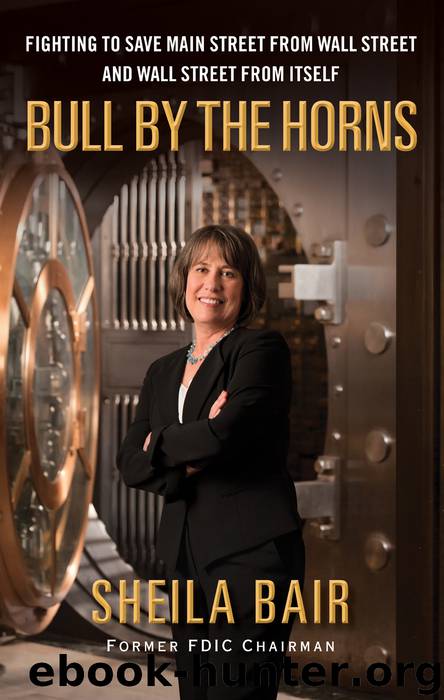Bull by the Horns

Author:Sheila Bair
Language: eng
Format: epub
Publisher: Free Press
CHAPTER 20
Dodd-Frank Implementation: The Final Stretch (or So I Thought)
The battles over financial reform did not end with the president signing Dodd-Frank. Virtually all of the reforms in the new law relied on agency rule makings for implementation. So as the industry redirected its army of lobbyists to the rule-writing process, I decided to try to outrun them. I knew that the longer regulators waited to finalize the rules, the greater the risk that they would be watered down. There was also another need for expediency: I had barely a year left in my five-year term. I wanted to make sure we finished the rules on resolution authority, deposit insurance, and the all-important Collins Amendment before I left office. I also wanted to complete rules that we had initiated containing important reforms to the securitization process.
Already amnesia was setting in about how bad the crisis had been. The Tea Party—born of outrage over the 2008 bailouts—was redirecting its ire toward government. Instead of providing political support for commonsense measures such as higher capital requirements, resolution authority, and mortgage-lending reform, it was bashing government and regulations for impeding the economic recovery, forgetting that the recession had been caused by the excesses of many large financial institutions. That, of course, was playing into the hands of industry, and it frustrated me no end. As a market-oriented Republican, I was outraged at the way some of the big firms had come running to Washington to be bailed out of problems of their own making. They had been worse than the proverbial welfare queen. Yet the narrative in some (not all) conservative circles was becoming that the crisis had been the government’s fault; folks at those poor big financial firms had been forced to do all those stupid things and be paid all of those big, multimillion-dollar bonuses because the government had wanted poor people to have mortgages. Right.
With less than twelve months left in my tenure, I had a very full plate. I moved quickly on organizational changes to implement the new law. We created an Office of Complex Financial Institutions (CFI). The office would take responsibility for backup supervision and resolution of bank and nonbank institutions with more than $100 billion in assets. I promoted Jim Wigand, who had been a superstar in handling our bank failures, to be in charge of the new office. Jason Cave was installed as his deputy in charge of creating better systems to monitor big banks. During the crisis, we had learned the hard way that we needed to keep a closer eye on them.
We also created a new division focused solely on consumer protection, consolidating our public education programs for deposit insurance and community outreach with our consumer examination functions for institutions with less than $10 billion in assets. To head the division, I hired Mark Pearce, who had overseen bank supervision for the North Carolina banking department and before that had worked at the Center for Responsible Lending. I wanted us to have a
Download
This site does not store any files on its server. We only index and link to content provided by other sites. Please contact the content providers to delete copyright contents if any and email us, we'll remove relevant links or contents immediately.
International Integration of the Brazilian Economy by Elias C. Grivoyannis(98542)
The Radium Girls by Kate Moore(11969)
Turbulence by E. J. Noyes(7977)
Nudge - Improving Decisions about Health, Wealth, and Happiness by Thaler Sunstein(7655)
The Black Swan by Nassim Nicholas Taleb(7054)
Rich Dad Poor Dad by Robert T. Kiyosaki(6506)
Pioneering Portfolio Management by David F. Swensen(6253)
Man-made Catastrophes and Risk Information Concealment by Dmitry Chernov & Didier Sornette(5951)
Zero to One by Peter Thiel(5729)
Secrecy World by Jake Bernstein(4698)
Millionaire: The Philanderer, Gambler, and Duelist Who Invented Modern Finance by Janet Gleeson(4417)
The Age of Surveillance Capitalism by Shoshana Zuboff(4243)
Skin in the Game by Nassim Nicholas Taleb(4200)
Bullshit Jobs by David Graeber(4136)
The Money Culture by Michael Lewis(4130)
Skin in the Game: Hidden Asymmetries in Daily Life by Nassim Nicholas Taleb(3960)
The Dhandho Investor by Mohnish Pabrai(3721)
The Wisdom of Finance by Mihir Desai(3693)
Blockchain Basics by Daniel Drescher(3537)
